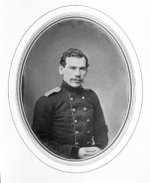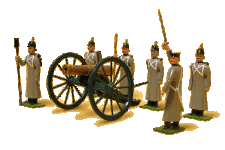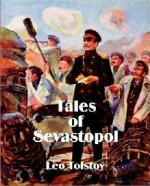PolarBear
Major
- Joined
- Feb 24, 2007
- Messages
- 6,706
I read today that Leo Tolstoy, author of War & Peace , served in the Crimean War in the defense of Sevastopol. Collectors might want to track down a copy of his eyewitness account of the siege.
"Tolstoy served as a second lieutenant in an artillery regiment during the Crimean War, recounted in his Sevastapol Sketches. He took part in the battles and showed incomparable courage. During the War he was awarded by orders and medals. His experiences in battle helped develop his pacifism, and gave him material for realistic depiction of the horrors of war in his later work."
Sevastopol Sketches
"In his three sketches devoted to the siege of Sevastopol during the Crimean War—which were published separately as Sevastopol in December, Sevastopol in May and Sevastopol in August—Tolstoy uses his characteristic analysis to reveal hidden truths about the human condition. By making his reader a voyeur of this warlike state, he was successful in challenging many of the cultural norms his Russian readers brought along to their understanding of what had happened during the Crimean War. As with a few of the works that followed this one closely (War and Peace in particular), Tolstoy handles war in both frank and emotional terms."
Illustrations:
1. Tolstoy in uniform
2. Russian Artillery of the Crimean War (Wm. Hocker)
3. Paperback edition of Sevastopol Sketches
"Tolstoy served as a second lieutenant in an artillery regiment during the Crimean War, recounted in his Sevastapol Sketches. He took part in the battles and showed incomparable courage. During the War he was awarded by orders and medals. His experiences in battle helped develop his pacifism, and gave him material for realistic depiction of the horrors of war in his later work."
Sevastopol Sketches
"In his three sketches devoted to the siege of Sevastopol during the Crimean War—which were published separately as Sevastopol in December, Sevastopol in May and Sevastopol in August—Tolstoy uses his characteristic analysis to reveal hidden truths about the human condition. By making his reader a voyeur of this warlike state, he was successful in challenging many of the cultural norms his Russian readers brought along to their understanding of what had happened during the Crimean War. As with a few of the works that followed this one closely (War and Peace in particular), Tolstoy handles war in both frank and emotional terms."
Illustrations:
1. Tolstoy in uniform
2. Russian Artillery of the Crimean War (Wm. Hocker)
3. Paperback edition of Sevastopol Sketches





